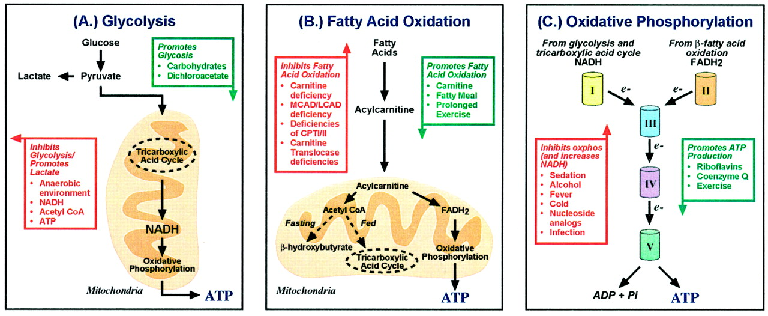Electron transport, oxidative phosphorylation, and b-oxidation of fatty acids
The electron transport chain which is also known by ETC couples electron transfer among an electron donor and an electron acceptor with the transfer of H+ ions across a membrane. Resulting electrochemical proton gradient is used to generate chemical energy in the form of adenosine triphosphate. The Electron transport chains are the cellular mechanisms used for extracting energy from sunlight in photosynthesis and also from redox reactions such as the oxidation of sugars.

Oxidative phosphorylation is a metabolic pathway that uses energy released through the oxidation of nutrients to produce adenosine triphosphate. While the various forms of life on earth use a range of different nutrients almost all aerobic organisms carry out oxidative phosphorylation to produce ATP the molecule that supplies energy to metabolism. That pathway is probably so pervasive because it is a highly efficient way of releasing energy compared to alternative fermentation procedure like as anaerobic glycolysis.
The Beta-oxidation is the process through those fatty acids in the form of acyl-CoA molecules are broken down in mitochondria and/or peroxisomes to generate acetyl-CoA the entry molecule for the citric acid cycle.